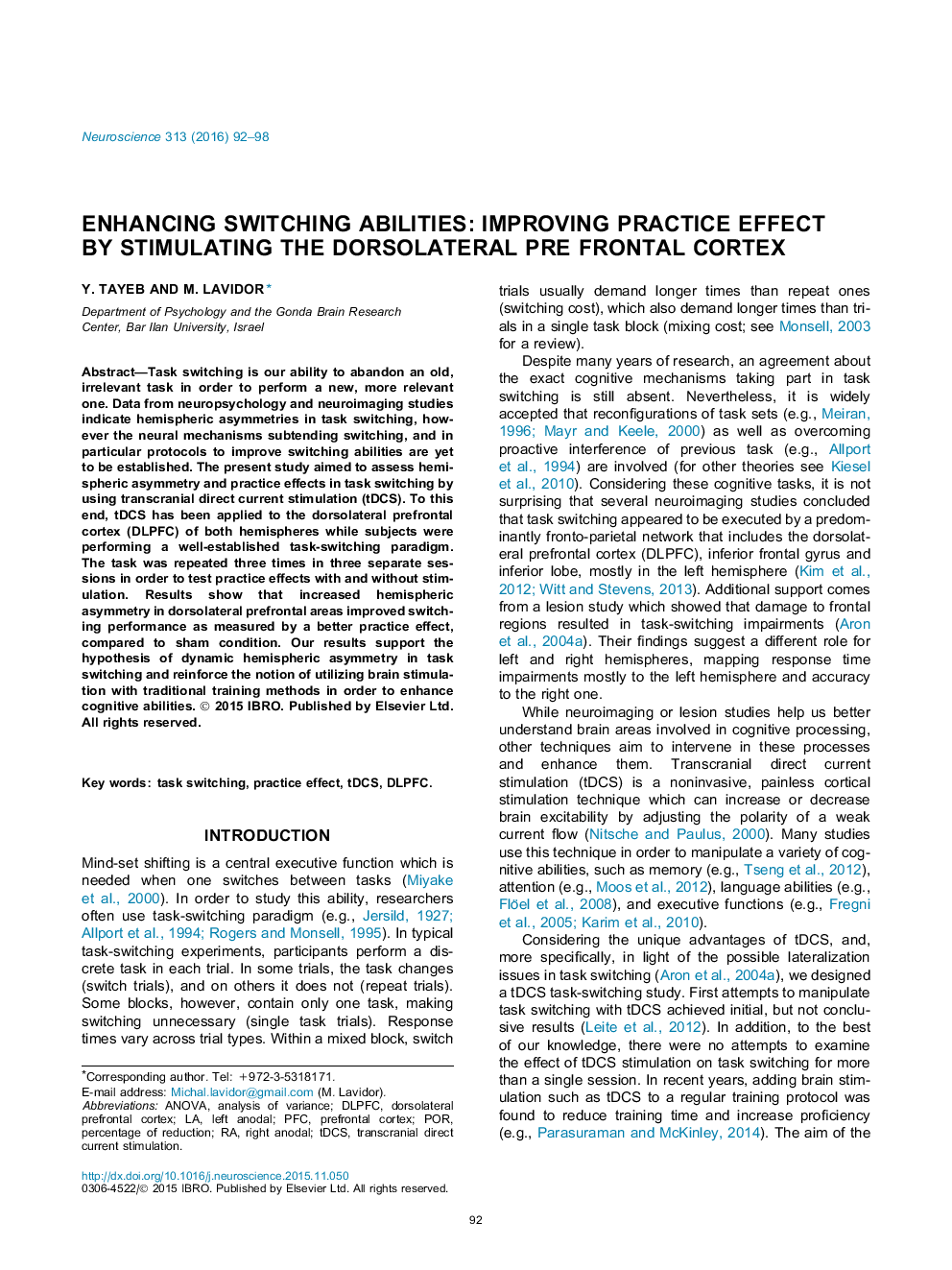| Article ID | Journal | Published Year | Pages | File Type |
|---|---|---|---|---|
| 6271390 | Neuroscience | 2016 | 7 Pages |
â¢We examined task-switching performance followed by tDCS on the DLPFC.â¢Stimulation revealed hemispheric asymmetries in task switching.â¢Bi-frontal stimulation of the DLPFC can improve switching performance.
Task switching is our ability to abandon an old, irrelevant task in order to perform a new, more relevant one. Data from neuropsychology and neuroimaging studies indicate hemispheric asymmetries in task switching, however the neural mechanisms subtending switching, and in particular protocols to improve switching abilities are yet to be established. The present study aimed to assess hemispheric asymmetry and practice effects in task switching by using transcranial direct current stimulation (tDCS). To this end, tDCS has been applied to the dorsolateral prefrontal cortex (DLPFC) of both hemispheres while subjects were performing a well-established task-switching paradigm. The task was repeated three times in three separate sessions in order to test practice effects with and without stimulation. Results show that increased hemispheric asymmetry in dorsolateral prefrontal areas improved switching performance as measured by a better practice effect, compared to sham condition. Our results support the hypothesis of dynamic hemispheric asymmetry in task switching and reinforce the notion of utilizing brain stimulation with traditional training methods in order to enhance cognitive abilities.
